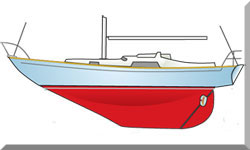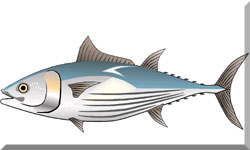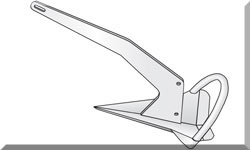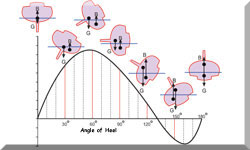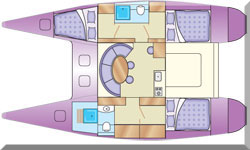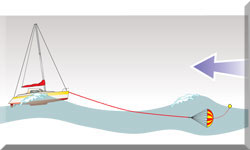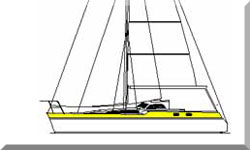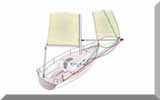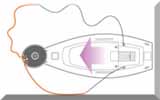- Home
- Irwin Sailboats
Irwin Yachts: Crafting Cruising Dreams with a Pragmatic Approach
For countless recreational sailors and aspiring liveaboards, the name Irwin Yachts has always brought to mind images of cavernous interiors, comfortable passages, and perhaps most importantly, an accessible pathway to owning a truly substantial sailboat.
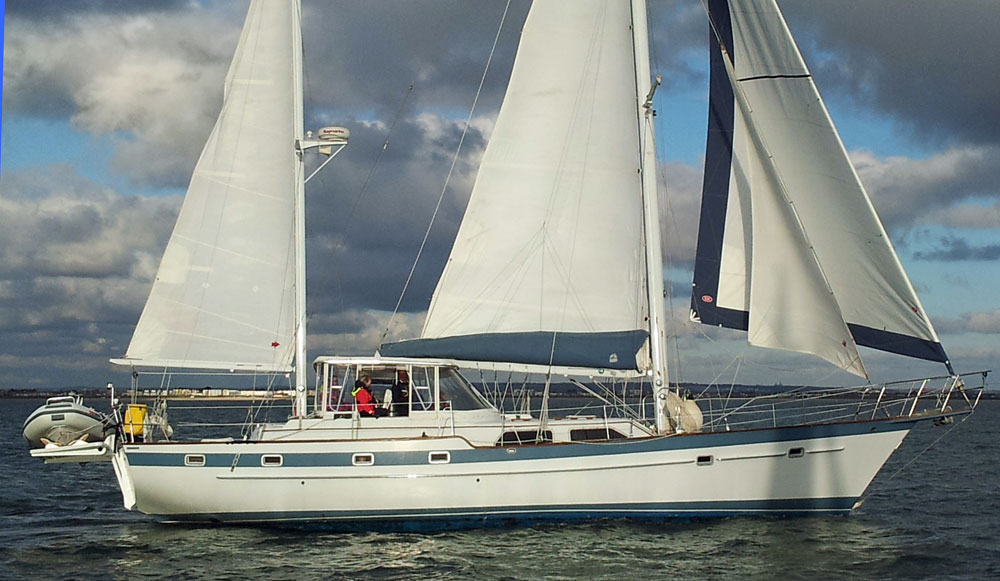 Irwin 52
Irwin 52Table of Contents
- A Florida Dream: The Genesis & Evolution of Irwin Yachts
- Designed for Living: Irwin's Distinctive Philosophy & Characteristics
- A Fleet of Cruising Contenders: Key Models & Their Evolution
- Under Sail: Performance & Seaworthiness
- The Inner Sanctum: Interior Layout & Comfort
- A Lasting Impression: Market Position & Legacy
- Navigating the Waters: Challenges & Considerations
- What to Look For: A Buyer's Guide
- In Summary
From his drawing board to the factory floor, Ted Irwin, a remarkably prolific designer and competitive sailor, carved out a unique and significant niche in the American sailboat market, eventually overseeing one of the nation's largest fiberglass yacht builders. It's true the last Irwin rolled off the line in 1992, but their enduring legacy means these boats remain a compelling and often surprisingly affordable choice for anyone dreaming of more space and capability on the water today.
A Florida Dream: The Genesis & Evolution of Irwin Yachts
Ted Irwin, a New Jersey native born in 1940, caught the sailing bug early and caught it hard. He wasn't content just to sail; he even built his own Moth dinghy, going on to dominate national and even world championships. That kind of hands-on passion and competitive drive defined his career. After some invaluable time with the US Coast Guard and then cutting his teeth at Morgan Yachts under Charley Morgan, Irwin felt the pull to strike out on his own. His first solo design, the 31-foot Voodoo, hit the water in 1963. Its success on the racecourse proved the perfect springboard for Irwin Yacht & Marine Corporation, which officially opened its doors in St. Petersburg, Florida, in 1966.
Ted's initial vision was refreshingly clear: he wanted to build sailboats that could not only hold their own in a race but were also genuinely comfortable and widely accessible to the everyday cruising sailor. His approach was remarkably integrated. He aimed to control costs relentlessly, buying supplies in massive bulk, owning his factory and the land it sat on, and manufacturing almost everything in-house – from masts to the brochures you’d find in a dealer's office. Starting small with a 12,500 sq ft factory, the operation quickly mushroomed, expanding to a sprawling 75,000 sq ft and employing over 200 people during its busiest years.
The story of Irwin Yachts wasn't always smooth sailing, mind you. The company navigated a few rough patches, including a couple of bankruptcies and name changes over the years. Yet, through it all, they astonishingly managed to build over 6,000 boats before the final curtain fell in 1992. Ted Irwin, the creative engine behind every single design, remained deeply involved even during the company's later struggles. Interestingly, his competitive spirit never waned; he was still designing highly successful racing yachts like the Razzle Dazzle series in the 1980s, often incorporating lessons learned from the racecourse directly into his cruising designs. His pragmatic, almost generous, nature even saw him trade molds for the Irwin 32 to help the fledgling Endeavour Yacht Corporation find its footing. It’s worth noting, too, that Irwin holds the distinction of building more cruising sailboats over 50 feet than virtually any other company worldwide, delivering over 300 units across their 52, 54, 65, and 68-foot models.
Designed for Living: Irwin's Distinctive Philosophy & Characteristics
At the heart of every Irwin lay Ted Irwin's personal touch; he was, after all, the company's primary naval architect and designer. He simply poured his competitive sailing background straight into his cruising designs. While you wouldn't typically call an Irwin a cutting-edge, ultra-light displacement racer, their design philosophy was unmistakable: consistently prioritizing generous interior volume, exceptional onboard comfort, and straightforward handling for the average recreational sailor and cruiser.
A defining characteristic for many Irwins, especially their larger offerings, was the center cockpit configuration. This clever layout allowed for truly massive aft cabins, creating a level of privacy and liveable space that was, and still is, highly sought after by those living aboard or embarking on serious extended voyages. Hull forms generally leaned towards moderate displacement, striking a very sensible balance between adequate sailing performance and a comfortable, predictable motion even in a seaway. Early models often sported full or long keels, but like many builders of the era, Irwin gradually shifted towards fin keels with skeg-hung rudders, a natural progression aimed at improving maneuverability.
For construction, Irwin Yachts primarily relied on fiberglass (GRP) for their hulls and decks. Hand lay-up was the standard technique of the time, and while solid, it's fair to say their build quality has occasionally been a talking point among owners. You might hear of some minor issues in certain production runs, perhaps non-thru-bolted hull-deck joints on a few smaller models, or minor leaks around older portlights. Yet, despite these occasional whispers, a great many Irwin owners will passionately tell you about the robust durability and longevity of their vessels. That's a true testament to the fundamental soundness of fiberglass construction and these boats' inherent ability to endure years of service with diligent care.
A Fleet of Cruising Contenders: Key Models & Their Evolution
The sheer breadth of the Irwin lineup was impressive, encompassing everything from coastal jaunters to genuinely substantial offshore platforms. The Irwin 27, launched in 1967, marked the company's official debut. But it was their larger models, particularly those that found immense favor in the Caribbean yacht charter industry, that really solidified their formidable reputation.
Some of the most popular & successful Irwin models include:
- Irwin 37 Mark IV: This center cockpit model is highly regarded for its genuinely expansive interior, often offering two private cabins & two heads – a significant achievement for a boat of this size. Frequently equipped with a cutter rig, it's considered an easily managed cruiser. Many current listings show these boats have received substantial upgrades, underscoring their ongoing appeal.
- Irwin 52: Often considered a trend-setting boat, the Irwin 52 was a visionary "deck-saloon" cruiser before the term was common, becoming one of the most popular 50-foot-plus boats ever built with over 250 hulls launched. These beamy vessels, typically ketch-rigged, offered motor yacht-like interior accommodations, a spacious cockpit, & wide side decks. Many feature a long cutaway keel with a partially balanced rudder, offering a blend of good performance under sail (often achieving 8+ knots in moderate winds) & a comfortable motion. The 52 was particularly popular in the charter industry & for liveaboards due to its immense interior volume, often featuring multiple cabins & heads.
- Irwin 42, 54, & 65: Alongside the 52, these other substantial models also proved immensely popular, especially in the charter industry, further solidifying Irwin's reputation for comfortable, commodious cruising. The Irwin 54, for example, was a prominent large-scale cruiser, often featuring a staysail ketch rig & a shoal draft keel (or centerboard) for versatile performance across varying depths, making it ideal for exploring shallower anchorages while still offering excellent offshore capabilities.
- Irwin Citation Series: While the majority of Irwins leaned heavily towards comfortable cruising, the Citation series, including models like the Citation 34, 39, & 40, aimed for a more performance-oriented experience. These typically incorporated fin keels & masthead sloop rigs. While perhaps not outright racers, they certainly offered a livelier sailing performance while retaining much of that characteristic Irwin interior volume.
Irwin's designs, like the wider industry, naturally evolved over time, reflecting broader trends such as the shift from full keels to fin keels for improved maneuverability. Yet, the central philosophy remained rock-solid: maximizing interior volume and providing ample, comfortable accommodations. This consistent focus kept them firmly appealing to a market that simply valued comfort afloat above all else.
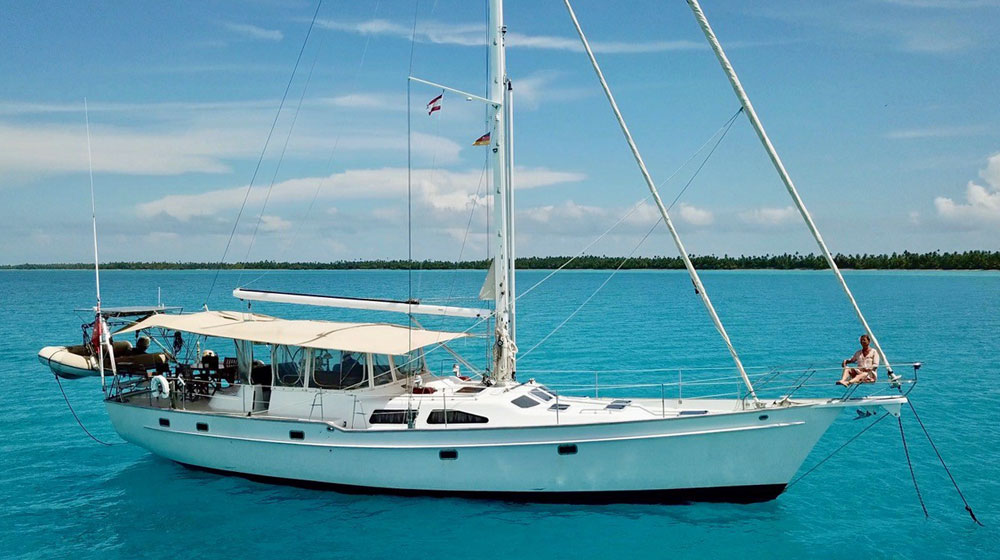 Irwin 54
Irwin 54Under Sail: Performance & Seaworthiness
Let's be clear: Irwin yachts are, first and foremost, stable and comfortable cruising platforms. If you're looking for blistering speeds or extreme upwind prowess, especially from the earlier, full-keeled models, you might need to adjust your expectations. For many cruisers, though, a predictable, gentle motion in a seaway and inherent stability are far more valuable than squeezing out an extra knot or two on the wind.
Their moderate displacement and often generous beam contribute directly to that famous stability. While you might hear some suggesting older, full-keeled models can be a bit sluggish to weather, the later fin-keeled designs and the Citation series generally offer a noticeably improved sailing performance. Features like a cutter rig, commonly found on larger Irwins, are incredibly valuable; they help break down sail area, making these substantial boats much easier to handle in stronger winds and during offshore passages.
Indeed, countless Irwin owners have successfully undertaken significant long-distance cruises, a powerful testament to their inherent seaworthiness. While they weren't explicitly designed as dedicated bluewater vessels in the same vein as some heavily built, small-volume offshore tankers, their robust fiberglass construction, typically deep bilges, and often substantial tankage for fuel and water make them remarkably capable for offshore passages, assuming proper preparation and equipment.
The Inner Sanctum: Interior Layout & Comfort
The interiors of Irwin yachts are, without much argument, their crowning achievement. They truly embody Ted Irwin's unwavering commitment to creating a comfortable and profoundly livable space below decks. The typical aesthetic often leans toward a traditional, warm, and inviting atmosphere, though, as with any used boat, individual vessels will naturally vary depending on previous owner updates and styling choices.
The entire layout philosophy zeroes in on maximizing usable space. Center cockpit models, in particular, absolutely shine here. They facilitate distinct living zones and that highly desirable separation between the main salon and the expansive aft owner's cabin. This provides a level of privacy you'd usually only find on much larger, custom-built vessels. Key interior features commonly found include:
- Spacious Salons: These areas are often flooded with light and air, thanks to ample portlights, windows, and opening hatches that invite excellent natural illumination and ventilation.
- Generous Galley Designs: Typically well-equipped, these galleys usually boast impressive counter space, often cleverly situated in a convenient passageway connecting the main and aft cabins. Some models even feature separate refrigeration and freezer units – a real bonus for extended cruising.
- Private Cabins with Heads: Both forward and aft cabins are generally well-proportioned, often including good storage and dedicated heads. This ensures comfort for multiple crew members or families. The aft cabin, particularly on center cockpit models, can often be a full-width owner's stateroom, a true private retreat.
- Accessible Systems: A point many Irwin owners commend is the straightforward access to engine and other mechanical systems. This thoughtful design considerably simplifies routine maintenance and any necessary repairs.
This deliberate emphasis on thoughtful ergonomics and overall livability undeniably makes Irwin boats perennial favorites for extended cruising and living aboard. They effortlessly offer the kind of interior volume that genuinely allows for a comfortable, uncrowded lifestyle on the water, whether you're settled at the dock or swinging at anchor in a secluded cove.
A Lasting Impression: Market Position & Legacy
Irwin Yachts successfully targeted a specific group: recreational sailors and boat owners yearning for a comfortable, expansive, and often more affordable larger cruising vessel. The brand's general perception within the sailing community is broadly positive, seen as a practical, good-value option, though, like any production builder, it's not entirely without its critics. While some have pointed to perceived inconsistencies in build quality during certain periods – perhaps minor finishes or specific hardware installations – a truly significant number of owners have found their Irwins to be remarkably reliable and enduring vessels.
On the used market, Irwin boats typically offer excellent value for their size and amenities. While they may not always command the stellar resale values of some higher-end, niche production boats, their inherent affordability makes them a highly compelling option for anyone looking to step into a larger cruising yacht without an astronomical budget. Used market prices will, of course, fluctuate widely based on size, overall condition, and any recent upgrades, but a well-maintained Irwin can certainly represent a very sound investment.
A vibrant and dedicated community of Irwin owners flourishes online, frequently congregating in forums and social media groups to share invaluable knowledge, tips, and personal experiences. This strong owner's network significantly fuels the brand's enduring appeal, providing a wellspring of support and camaraderie for those who choose to sail an Irwin.
The lasting legacy of Irwin Yachts is undeniably rooted in Ted Irwin's unwavering commitment to making comfortable, spacious cruising accessible to a broad audience. He put an astonishing number of boats into commission, helping countless sailors realize their dreams of exploring distant horizons or simply enjoying life afloat with ample room to stretch out and truly live.
Navigating the Waters: Challenges & Considerations
As is the case with virtually any major production boat builder, Irwin Yachts faced its share of challenges and naturally attracted certain criticisms. As mentioned earlier, some period-specific issues concerning quality control have surfaced in owner discussions. These might include instances of leaks around portlights, concerns with the hull-deck joint on certain models, or the use of gate valves on through-hull fittings. Such issues, it's important to note, are generally not insurmountable. However, they powerfully underscore the critical importance of arranging a thorough pre-purchase survey when you're seriously contemplating a used Irwin.
You might also hear some observers note perceived drawbacks in sailing performance, particularly when heading directly upwind, for specific models. For the typical cruiser, though, this is often a trade-off willingly embraced for the sheer comfort and generous interior volume. Rudder issues, specifically related to the support structure of skeg-hung rudders, have also occasionally been reported on a few older models. This, again, simply reinforces the need for a careful inspection of this area during a survey.
The cost of ownership, while generally reasonable for a boat of its size, will naturally depend heavily on the individual boat's condition and the extent of upgrades or deferred maintenance it requires. As with any aging fiberglass boat, prospective buyers should always be prepared for the typical maintenance items associated with older systems and components.
What to Look For: A Buyer's Guide
When considering an Irwin sailboat, especially a pre-owned model, a comprehensive survey is absolutely paramount. Pay particularly close attention to:
- Hull-Deck Joint: Carefully inspect for any signs of leaks or deterioration, especially on older models or those with teak toe rails.
- Through-Hull Fittings: Verify the condition and type of valves. It's highly advisable to replace any old gate valves with modern, reliable seacocks if present.
- Rudder & Skeg: Thoroughly check for any damage, cracking, or evidence of past repairs, particularly in models where this area has been a reported weakness.
- Portlights & Hatches: Look for any signs of leaks and ensure all seals are intact and mechanisms operate smoothly. Many older Irwins may have had their portlights replaced over time, which is generally a positive indicator of proactive maintenance.
- Engine & Systems: As with any used boat, the condition of the engine, electrical systems, and plumbing is critical. Many Irwins originally came equipped with reliable Perkins diesel engines, but age and maintenance history are key factors to assess.
- Interior Condition: While the inherent spaciousness is a major draw, carefully evaluate the condition of the joinery, upholstery, and overall cleanliness. Many Irwins have undergone interior updates, which can significantly enhance their value and appeal.
In Summary
Irwin Yachts, even though they're no longer in production, undeniably left a substantial and lasting mark on the cruising sailboat market. Founded by the visionary Ted Irwin, the company distinguished itself by consistently delivering spacious, comfortable, and generally affordable fiberglass cruising boats. While they certainly had their quirks or drew some criticisms – particularly regarding certain aspects of construction quality in specific eras, or their pure sailing performance when compared to more race-oriented designs – Irwins consistently offered an unbeatable combination of interior volume and genuine livability.
From the widely popular 37 Mark IV to the impressive 52, 54, and 65, Irwin boats provided countless sailors with the ideal platform to truly realize their cruising dreams. Their enduring legacy stems directly from a wonderfully pragmatic approach to boat building, one that thoughtfully prioritized the real-world needs of recreational sailors for comfort, abundant space, and simply a truly pleasant experience on the water. For anyone seeking a well-found, capacious cruising sailboat on the pre-owned market, an Irwin continues to be a compelling and very worthy consideration.
Resources & References
Recent Articles
-
Optimising Your 12-Volt Boat Fridge for Offshore Sailing & Efficiency
Dec 01, 25 11:05 AM
Master your 12-Volt Boat Fridge system. A guide for experienced sailors covering mechanics, installation, troubleshooting, and advanced electrical efficiency on extended voyages. -
Jonmeri 40: Cruising Specs, Performance Ratios & Review
Nov 30, 25 09:08 AM
An in-depth, expert review of the Jonmeri 40 sailboat. Analyse design philosophy, D/L & CSF ratios, cruising suitability, and common ownership concerns for this Finnish-built, high-performance ocean c… -
Alajuela 48: Review, Specs, & Performance Ratios for Offshore Cruisers
Nov 29, 25 12:46 PM
Detailed analysis of the Alajuela 48 full-keel cruiser, including designer Robert Perry's philosophy, comprehensive specifications, key design ratios (SA/D, D/L, CSF), and suitability for experienced…


